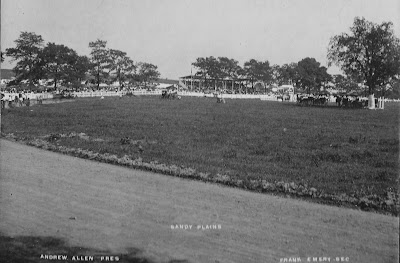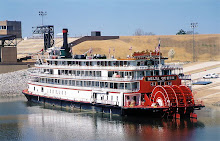
Most are aware of the murders of Jock Yablonski, his wife and daughter in Clarksville in 1969. Not as well known are the details of a dramatic scene took place in that same Clarksville house thirty years earlier. Years ago, my Aunt Rose Durdines Krencik ( she, and later I , grew up in a house just over the hill in the background ) told me a story of an event that was witnessed by her and many others. At the time the large stone two story home was a boarding house. She recalled a man staying there had become deranged and had barricaded himself in the home. A large crowd gathered on the road ( visible to the right in photo ) as State Police were called to resolve the situation. Soon after the officers entered the house, she remembered " shots were heard and soon the body of a dead trooper was carried out, dressed in a light colored uniform and his chest was covered with blood ". I had forgotten this story until I read a book , written in the 1940's, on the history of the Pennsylvania State Police . There I found mention of the story. The following is taken from the Pennsylvania State Police site.
At 3:35 p.m. on January 30, 1939, State Police Corporal Naughton ( pronounced Knock-ton ) , Privates Rittelmann and Fair, Washington County Detective Powell, and Sheriff Matt Armstrong responded to a call for assistance. While serving an arrest warrant on Frank Palanzo, Chief of Police William Morgan from Fredericktown was threatened by Palanzo. Palanzo had also threatened his family with a loaded gun. He was barricaded in a home located in a mining town in East Bethlehem Township, Washington County, near Clarksville. Palanzo threatened to shoot anyone who came near him. Corporal Naughton entered the three-story home and climbed the stairs to the second floor while calling for Palanzo to come out and talk it over. Palanzo opened the bedroom door where he was hiding, and shot Corporal Naughton at close range. Suffering a severe chest wound from a shotgun, Corporal Naughton fell face down to his death. Private Rittelmann carried Corporal Naughton from the landing. Reinforcements were summoned and the detail began hurling tear gas canisters into the house. Palanzo surrendered. He was tried for murder and drew a life sentence.
 Pa. State Police photo
Pa. State Police photo
George Dewey Naughton was born January 12, 1899, at Sharpsburg, Pennsylvania. He served in the US Army Medical Corps from September 28, 1917, to July 23, 1919, and saw service in England and France during World War I. At 21, Corporal Naughton enlisted in the Constabulary on November 1, 1926 and was assigned to Troop A, Greensburg. As a result of the State Police/Highway Patrol merger, he was reassigned to Troop B-1, Washington. Corporal Naughton was buried in Greenwood Cemetery near Sharpsburg. He was survived by his wife, Mrs. Mary E. Naughton, of Dormon. At 40, he had completed 12 years and 3 months of Pennsylvania Motor Police service.
Further information was found in the files of the Washington Observer-Reporter for Jan.6, 1970.
The brutal Murders of Joseph A. ( Jock ) Yablonski, his wife and daughter recalled an incident of nearly 31 years ago when a veteran State Police officer was murdered by a crazed gunman.The two story stone structure was a boarding house when officers were called there on Jan. 30, 1939. Frank Palanzo, 47, an unemployed coal miner had been causing considerable trouble. He had barricaded himself in a second story bedroom and refused to come out at the urging of authorities. At one point he stuck a shotgun out the window and threatened to shoot. Naughton, a 12 years veteran of the force entered the house and climbed the stairway leading to the second floor. He pleaded with Palanzo " lets talk it over ". The door opened and Naughton was blasted twice with shotgun fire. Paul Rittleman, who was later to become State Police Commander, risked his own life by entering the building to drag out the body of his superior officer. Palanzo withstood a barrage of tear gas for nearly 3 hours before surrendering. At the time of his arrest, Palanzo told police he had served with the Italian army in WW I. He was eventually incarcerated in Fairview, an institution for the criminally insane in northeast Pennsylvania.

Frank Palanzo at the time of his arrest, from an unidentified newspaper clipping, courtesy of Ida Mary Wortman Haftman

Several years ago, I had the opportunity to look around in this house. On the handrail , near the top of the staircase is a deep graze from a large caliber bullet. Officer Naughton, after being shot and as he fell, fired his revolver once, the bullet hit that railing, missing Palanzo . Palanzo then fired again ( a 12 guage shotgun ) , killing the trooper. Also visible, in what is now a crawl space, is a modern repair to the chimney about three feet off the floor. This is where the resourceful Palanzo, during the three hour tear gas barrage, picked the mortar out to be able to breath fresh air from the chimney. It was only after the officers put tear gas down the chimney that he finally surrendered. As he was brought out the back door of the house, the story is that in anger at the death of Naughton, one of the troopers fired a shot at him before being restrained by others. Near the door today one can see a gouge in the stone supposedly made by that bullet.
Helen Vogt, in her book Westward Of Ye Laurall Hills, talks of interviewing Jock Yablonski in early 1969. Jock remembered that while he was working in the Vesta mine at California Pa. in 1927, he was " jailed for some offense and miserably treated ( beaten ) by Naughton," and " the chagrin and bitterness stayed with him for many years." Soon after the killing of Naughton, out of curiosity, Jock went to the house, became fascinated with it and then bought it in 1943. He had a extensive renovations done ( including sandblasting the stone and carefully preserving the original floors under new wood flooring ) and moved his family into it in 1947.
The details of the murders of Jock, Margaret and Charlotte Yablonski are well known and will not be covered here at all. To a small degree, I knew all of those people personally so, in respect I will say that the United Mine Workers lost a fearless and dedicated leader and the Clarksville community lost several members of an accomplished family.
I am gathering information for a post on the house's varied history, which goes back to 1776 -78.
All images property of the author unless noted






















 This is an 1902 banknote from the First National Bank of Millsboro Pa. This bank went out of business in the early 1930's.
This is an 1902 banknote from the First National Bank of Millsboro Pa. This bank went out of business in the early 1930's.

















































